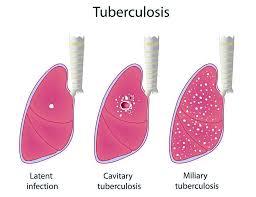Prevalence of Tubal Obstruction On Rise: Root Cause Analysis
Conception is a complex physiological process, every link is important, and the fallopian tube is the key for transporting the eggs and is the only place for sperm-egg union as well as the channel for fertilized eggs to go to the uterine cavity. So it somewhat becomes the most problematic place, among infertile women, at least one-third suffer from tubal blockage, and there is a gradual upward trend.
Gynecological inflammation
Shortly after unsafe sex, some females will feel an increase of vaginal secretions, there is a burning sensation, and if they go to the hospital for examination, the testing results could be non-gonococcal urethritis or chlamydia infection, etc. This kind of sexually-transmitted disease is not always curable in a short term. Then when you find out about your infertility, a test result of bilateral tubal interstitial obstruction will come along, the doctor may say it is related to salpingitis caused by chlamydia ascending infection.

Pelvic and genitourinary tract inflammation is responsible for tubal obstruction. Such as cervicitis, endometritis, adnexitis, etc., if it is not treated in time, the inflammation tends to spread into the fallopian tubes and lead to tubal occlusion. If the pelvic, genitourinary tract infection can be cleared up, then the most important factor of tubal obstruction can be eliminated at the same time.
Surgical infection
Postoperative infection of uterine cavity, pelvic cavity and abdominal cavity
The female genitalia is not an isolated system. There are many organs adjacent to the fallopian tubes in the pelvis alone. Inflammation of any organ in the pelvis may involve the fallopian tubes. Uterine cavity, pelvic and abdominal surgery after the infection, is also a major cause of tubal obstruction. If the sterilization is not strictly applied, or the original reproductive system is acompanied with chronic inflammation, it may bring about postoperative infection, or if the operation is not standardized, inflammation could occur in patients, thus affecting natural pregnancy.

Therefore, to ensure to have an unobstructed fallopian tube, we must pay attention to anti-infection treatment after uterine cavity operation, even if it is abdominal surgery in which the operative site is far from the fallopian tube.
Postpartum/Post-Abortion Infection
There is an increasing trend of infertility caused by induced abortion. The main cause for this kind of infertility is that after abortion there can be abnormal tubal patency (occluded or obstructed), intrauterine adhesions, endometriosis, luteal insufficiency and so on. After abortion or child delivery, the body resistance is weakened, coupled with incomplete closure of dilation of the cervix, the presence of bacteria in the cervix may become an ascending infection of the pelvic cavity.
Tuberculosis - Tubal Tuberculosis

Mycobacterium tuberculosis is different from other germs. It can spread to reproductive organs through blood and lymphatic channels. Among reproductive organs, oviduct is the most vulnerable site of tuberculosis. Tuberculous salpingitis, is generally a chronic disease, and it is difficult to cure it through non-surgical recanalization, what're more, even after surgical recanalization, pregnancy rate is still very low.
Therefore, for tuberculosis one must try to prevent it from childhood by BCG vaccination, and once tuberculosis is detected, one should go for standardized treatment to prevent the spread of bacteria to the fallopian tube causing tubal tuberculosis.
Congenital dysplasia of fallopian tube
This is a rare phenomenon. For congenital fallopian tube malformation, fallopian tube can be too long, narrow or tortuous, and one can only rely on surgery or IVF for the possible pregnancy. There are many treatment methods for tubal occlusion, including tubal drainage therapy, X-ray tubal intervention dredging therapy, hysteroscopy, laparoscopy therapy, and enema therapy, etc. However the success rate for these measures is not high enough. So some patients have to try IVF.

However with Fuyan Pill, no surgery is needed, and it'll be a natural therapy with ultimate recovery of reproductive system and female fertility. The herbal ingredients include angelica, peach kernel, safflower, and licorice, etc., all together they work to promote blood circulation, diuresis and dehumidification, clear heat and anti-inflammatory, so that the tubal blockage or hydrosalpinx caused by gynecological inflammation can be cured without side effects or drug resistance, along with enhanced immunity and better physical health.
Do You Know the Fundamental Harm of Tubal Effusion?
previous pageCurrent Management of Tubal Infertility: Natural Cure On the Go
next page
You may also be interested in
- Is Fallopian Tube Blockage Causing Your Lower Abdominal Pain?
- Hydrosalpinx and IVF: What Are the Chances of Successful Embryo Implantation?
- Resistance During Fallopian Tube Examination May Indicate Mild Blockage
- What Should Patients with Fallopian Tube Blockage Pay Attention to in Their Daily Life?
- Mild Fallopian Tube Blockage: Exercise and Heat Therapy as Adjunct Treatments
Testimonials
- Adenomyosis with Ureaplasma Urealyticum Cured by Fuyan Pill
- Tubal blockage with hydrosalpinx can be cured by TCM shortly
- Fuyan Pill Helps A woman with Adenomyosis Get Pregnant
- A Woman with Hydrosalpinx Is Cured with Fuyan pill
- Pelvic Inflammatory Disease Testimonials
- Irregular Vaginal Bleeding and Endometrial Thickening Cured by Fuyan Pill
- Pruritus Vulvae and Frequent Urination: Mycoplasma Infection Cured after 2 Courses



